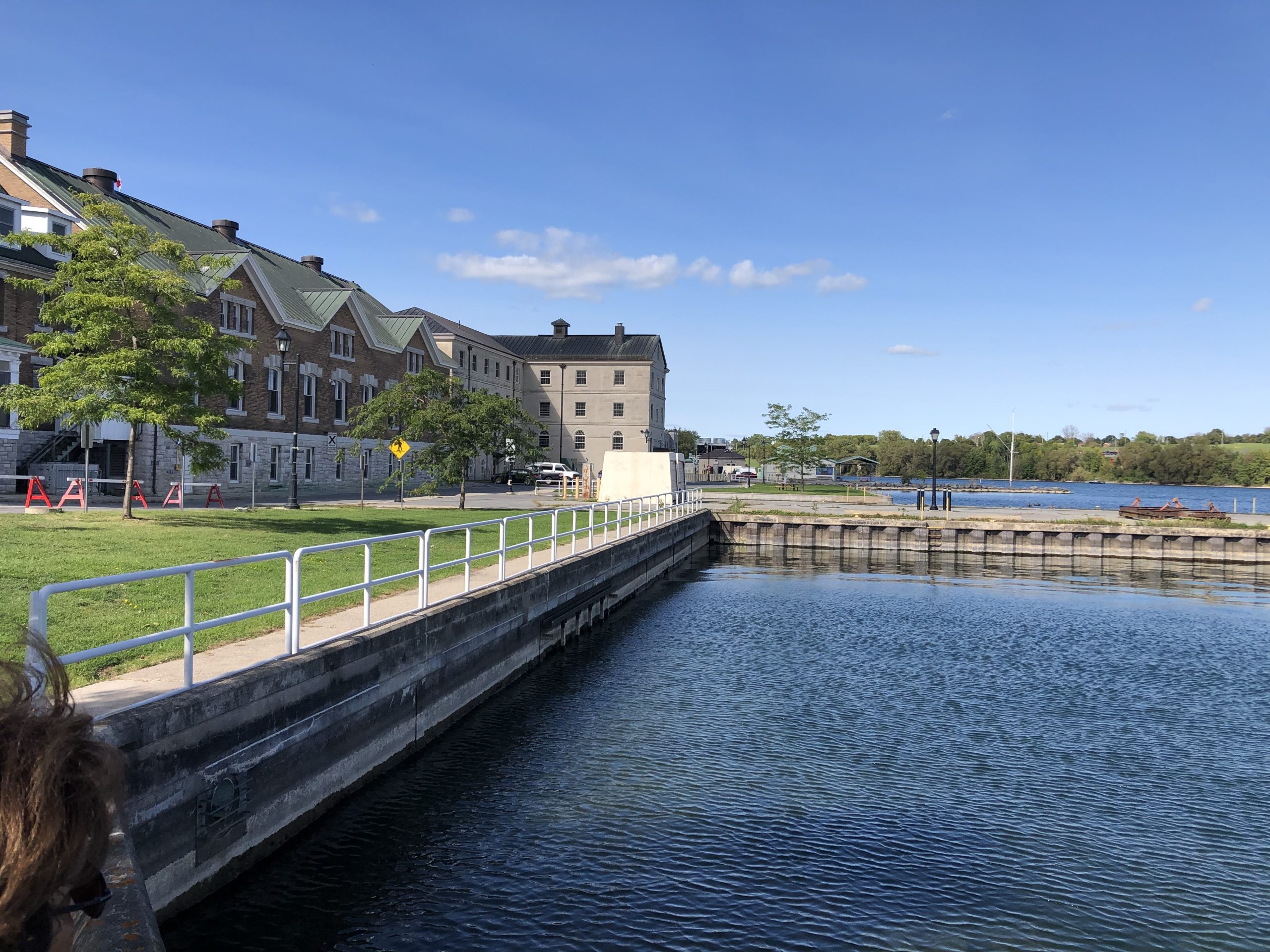
Before the founding of RMC, Point Frederick already possessed a rich history. Highlights of this exciting legacy can be found on plaques and educational displays located on the RMC grounds near important features. Supporting historical documents are found in archives and libraries, journals of early visitors, published materials, and archeological research reports. Military officers who long ago served at Fort Frontenac, Fort Henry and Point Frederick have left sketches, paintings, maps and photographs that support a visual story. Historians, librarians, and writers, some with RMC, were fascinated with the historic evidence around them, and did research that resulted in important papers. Evidence of the past can still be found on today’s landscape, and in the surrounding waters.
Point Frederick was well known to the Indigenous peoples who used the site for seasonal hunting and fishing. The first Europeans were the French who named the site “Pointe de Montréal.” An early French-Canadian naval commodore, Captain René-Hippolyte Laforce created one of the two first accurate maps of Lake Ontario. The map reported the depths of Kingston harbour and was one of the first to depict Navy Bay.
Another French-Canadian mariner, Jean-Baptise Bouchette became a historical figure for preventing the capture of Governor-in-Chief Guy Carleton by rebel forces during the early months of the Revolutionary War. Escaping capture by the rebels allowed Carleton to lead the successful defence of Quebec against the American siege of 1775-76.
More than a decade later, it was the same Guy Carleton, now called Lord Dorchester, who made the decision to occupy Point Frederick with the Lake Ontario naval forces, called the Provincial Marine. When the move occurred in 1789, they found a single dock and two storehouses, built in 1783-84 as a shipping waypoint. What distinguished Navy Bay from other harbours on Lake Ontario was the depth, which reached nearly 30 feet close to shore.
The Provincial Marine had a small fleet of three armed vessels under the command and control of the British army. The Marine included two very experienced officers, the same Captains Bouchette and Laforce. Transforming the shipping waypoint into a dockyard capable of building and maintaining armed sailing vessels was the responsibility of the two French Canadians, former British adversaries. They soon made changes that can still be appreciated today.
Photograph of the shoreline where the first Provincial Marine dockyard was built in 1789.
9884 Robert (Bob) Banks
Dr. Banks will launching his new book Warriors and Warships on Monday 20 February 2023, 2pm, at Memorial Hall, 216 Ontario Street Kingston. If you are interested in attending please RSVP to: contact@frontenacheritage.ca


